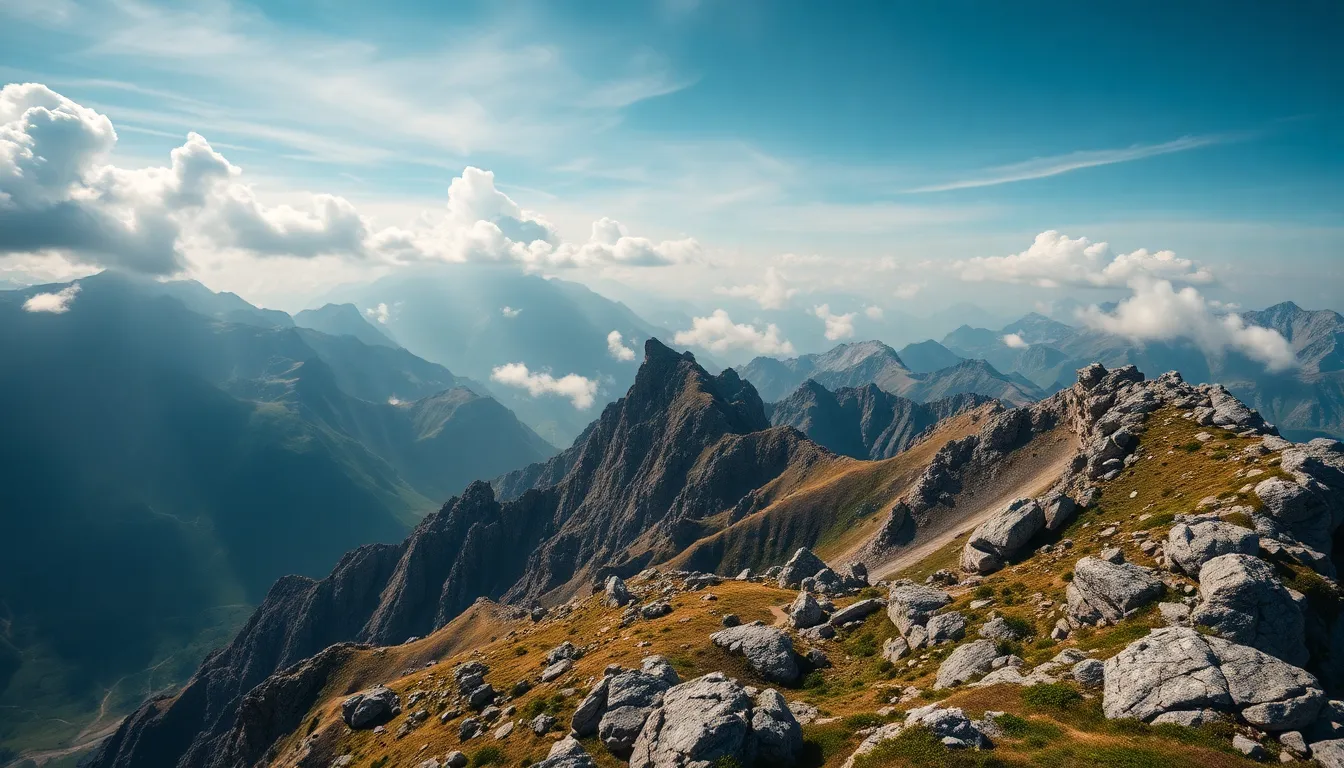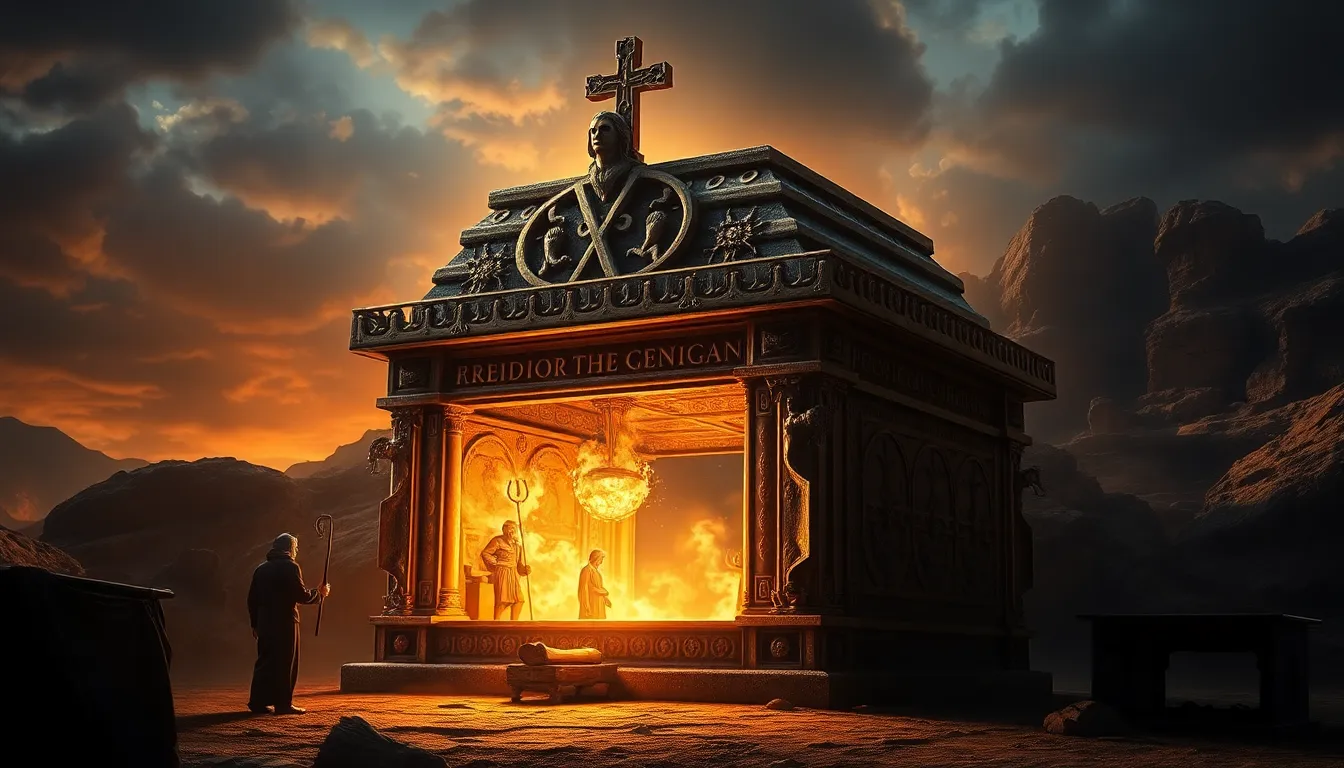The Forbidden Heights: Exploring the Myths of Untouchable Mountains
I. Introduction
The concept of “untouchable mountains” carries a rich tapestry of myths, spirituality, and cultural significance. These majestic peaks, often shrouded in mystery, have been revered and feared throughout human history. From ancient civilizations to modern societies, mountains have played a crucial role in shaping beliefs and traditions.
Mountains often symbolize the connection between the earth and the divine, serving as a bridge between humanity and the heavens. In various cultures, they are seen as sacred spaces, embodying the presence of gods or spirits. This article will explore the allure of these untouchable mountains, delve into the legends that define them, and examine the cultural and environmental implications of their reverence.
II. The Allure of Untouchable Mountains
Mountains have always held a special significance in human civilization. They are not merely physical structures but profound symbols of endurance, resilience, and the sublime. Their towering heights inspire awe and provoke a deep psychological and spiritual response.
- Historical Significance: Throughout history, mountains have served as natural barriers, strategic locations, and sacred grounds. They have been central to survival, culture, and spirituality.
- Psychological and Spiritual Aspects: The act of ascending a mountain is often seen as a journey of self-discovery and spiritual awakening. Many cultures have rituals and practices that honor these sacred spaces.
- The Idea of the “Forbidden”: The notion of forbidden heights adds to the allure, evoking curiosity and a sense of adventure. It reflects humanity’s desire to challenge the limits imposed by nature.
III. Legendary Untouchable Mountains Around the World
Many mountains have earned their status as untouchable through centuries of myth and reverence. Here are some of the most notable:
- Mount Meru: Central to Hindu and Buddhist cosmology, it is often considered the axis of the universe, surrounded by sacred oceans and mythical creatures.
- Mount Olympus: In Greek mythology, this mountain is the home of the gods, a place where divine beings reside and interact with humanity.
- Mount Kailash: Revered by Hindus, Buddhists, Jainists, and Bonpos, this mountain is considered the abode of Lord Shiva and a pilgrimage site for millions.
- Other Notable Mountains: Peaks like Mount Fuji in Japan, Aconcagua in South America, and the Himalayas also carry significant cultural and spiritual weight.
IV. The Myths and Legends Surrounding These Peaks
Mountains are often the focal point of rich myths and legends that explain the origins of the world and humanity’s place within it. These stories are steeped in creation myths and supernatural encounters.
- Creation Myths: Many cultures have creation myths that feature mountains as the first land formed from the primordial chaos, symbolizing stability and life.
- Tales of Divine Encounters: Legends abound of gods descending from mountains to interact with mortals, imparting wisdom or bestowing gifts.
- Folklore and Local Traditions: Local traditions often integrate mountains into their folklore, where they are seen as protectors or harbingers of fate.
V. The Physical and Spiritual Challenges of Climbing Forbidden Heights
Climbing sacred mountains is not just a physical endeavor but also a spiritual journey fraught with challenges and risks.
- Dangers and Risks: The physical challenges of climbing include altitude sickness, extreme weather, and treacherous terrain. Many climbers have faced life-threatening situations.
- Spiritual Practices: Before embarking on a climb, many engage in rituals such as prayer, meditation, or offerings to honor the mountain and seek protection.
- Case Studies: Stories of climbers who have faced the wrath of the mountain or experienced profound spiritual transformations add to the mystique surrounding these peaks.
VI. Cultural Perspectives on Sacred Mountains
Indigenous and local beliefs about mountains vary widely, yet they share common threads of reverence and respect.
- Indigenous Beliefs: Many indigenous cultures consider mountains to be ancestors, spirits, or deities, with rituals that honor their presence.
- Globalization Impact: The rise of tourism and globalization has affected traditional practices, often leading to a dilution of sacred narratives.
- Preserving Cultural Narratives: Efforts are being made to preserve these narratives through education and community engagement.
VII. Environmental Concerns and Conservation Efforts
The ecological impact of tourism on sacred mountains is a growing concern, as the delicate balance of these ecosystems faces increasing pressure.
- Ecological Impact: Increased foot traffic can lead to erosion, litter, and disruption of local wildlife habitats.
- Conservation Initiatives: Many organizations are working to promote responsible tourism practices that protect these sacred sites.
- Maintaining Sanctity: The importance of balancing human activity with the preservation of the sanctity of these mountains cannot be overstated.
VIII. Modern Interpretations and Artistic Representations
The allure of untouchable mountains extends into literature, art, and media, shaping public perception and inspiring creativity.
- Literature and Art: Artists and writers have long drawn inspiration from mountains, using them as metaphors for struggle, spirituality, and transcendence.
- Cinema and Media Influence: Films and documentaries have popularized the myths surrounding these mountains, often romanticizing the challenges of climbing.
- Contemporary Adaptations: Modern interpretations of ancient myths keep these stories alive, allowing new generations to connect with their cultural heritage.
IX. The Future of Untouchable Mountains
The future of untouchable mountains lies in finding a balance between tourism, preservation, and cultural respect.
- Balancing Act: The challenge remains to allow visitors to appreciate these sacred sites while maintaining their sanctity.
- Role of Technology: Virtual experiences and digital storytelling are emerging as ways to engage with these mountains without physical intrusion.
- Evolution of Myths: As cultures evolve, so too will the myths surrounding these peaks, adapting to contemporary values and beliefs.
X. Conclusion
Untouchable mountains represent a profound intersection of nature, culture, and spirituality. They challenge us to respect the boundaries they embody while inspiring awe and reverence. As we explore these majestic peaks, we must navigate the delicate balance of appreciation and protection, ensuring that future generations can also experience their timeless allure.



